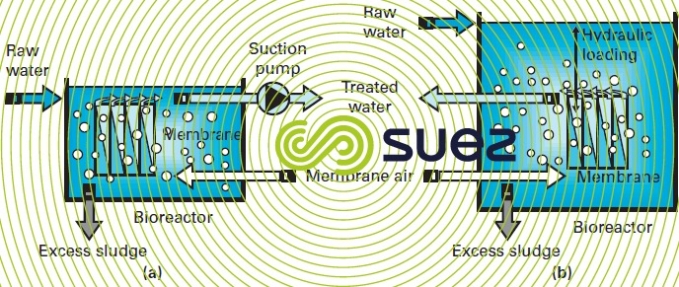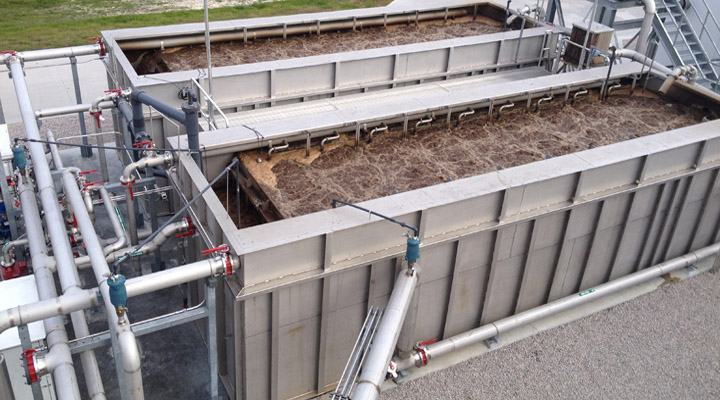The Science Behind Membrane Bioreactor: How It Works and Why It’s Effective
The Science Behind Membrane Bioreactor: How It Works and Why It’s Effective
Blog Article
Understanding Membrane Bioreactors: The Future of Wastewater Therapy
Membrane layer bioreactors (MBRs) stand for a notable development in the field of wastewater therapy, incorporating biological procedures with innovative membrane filtration to boost effluent top quality. As worldwide water shortage and stringent governing frameworks become significantly pushing issues, MBR modern technology uses an efficient action with its capability to lessen footprint and maximize source healing. The fostering of MBRs is not without its obstacles, which warrant cautious consideration. What are the vital aspects influencing their application and long-term feasibility in various contexts? The solutions may improve our technique to wastewater management.
What Are Membrane Bioreactors?

The core elements of MBR systems consist of a bioreactor where microbial task occurs and a membrane system that filterings system the combined alcohol. This dual functionality allows the synchronised destruction of natural matter and solid-liquid separation in a single step. MBRs can operate in both submerged and outside configurations, with submerged systems being much more typical because of their portable layout and functional performance.
The fostering of MBR modern technology has gained traction in various applications, ranging from community wastewater treatment to industrial effluent administration. MBRs are especially helpful in situations where area is restricted or rigid effluent high quality requirements need to be satisfied. By preserving a high concentration of microorganisms within the bioreactor, MBRs enhance the degradation of natural toxins, consequently producing higher treatment efficiencies compared to traditional methods.
Secret Benefits of MBR Modern Technology
The combination of biological therapy with membrane filtration in MBR systems uses various advantages that establish it aside from traditional wastewater therapy methods. Among the primary advantages is the improved effluent top quality. MBRs successfully remove put on hold pathogens and solids, attaining higher degrees of purification that satisfy stringent discharge criteria and facilitate water reuse applications.

Another considerable benefit is the reduced sludge manufacturing. MBR systems create less excess sludge, causing reduced disposal costs and a reduction in ecological influence. The closed nature of the membrane layer system decreases the risk of odor exhausts and boosts overall process control.
Last But Not Least, MBRs are adaptable and flexible, making them ideal for numerous wastewater types, including commercial and metropolitan resources. The ability to integrate with sophisticated therapy modern technologies better enhances their effectiveness, making MBRs an appealing option for the future of wastewater monitoring.
Obstacles and Limitations of MBRs
While MBR modern technology offers various advantages, it likewise deals with a number of difficulties and restrictions that can affect its extensive fostering. One considerable difficulty is the high funding and functional expenses connected with MBR systems. The preliminary financial investment for membrane products and the needed facilities can be substantial, making it less available for smaller sized communities or industries.
Furthermore, important link membrane layer fouling remains a crucial problem that can decrease system performance and rise upkeep demands. Fouling occurs when solids, raw material, or microbes accumulate on the membrane surface area, bring about minimized permeability and requiring frequent cleansing or replacement.
Another constraint includes the complexity of the technology. MBR systems call for proficient personnel for operation and upkeep, which can be a barrier in areas with limited technical proficiency. The disposal of invested membranes offers environmental worries, as the materials are usually not naturally degradable and can add to squander monitoring difficulties.
Lastly, while MBRs can successfully treat a large range of wastewater, they might not be suitable for all applications, especially those look at this now with high focus of fats, oils, and greases, requiring more research study and technology to deal with these restrictions.
Applications of Membrane Layer Bioreactors
In various markets, membrane layer bioreactors (MBRs) have become a functional solution for wastewater treatment (Membrane Bioreactor). Their applications extend municipal, industrial, and farming setups, showcasing their adaptability and efficiency in varied settings. In municipal wastewater treatment plants, MBRs considerably boost effluent top quality, permitting water reuse and decreasing the ecological influence of released wastewater
Industrially, MBRs are employed in food and beverage processing, textile production, and pharmaceutical manufacturing, where they properly deal with high-strength waste streams. Their capability to deal with rising and fall loads and varying pollutant concentrations makes them especially useful in these fields. In addition, MBRs promote the elimination of virus, put on hold solids, and natural issue, adding to conformity with stringent discharge regulations.
In agriculture, MBRs are increasingly used for dealing with farming drainage and animals wastewater, making it possible for the recuperation of nutrients for plant food production. They likewise aid in the treatment of greywater for irrigation, promoting sustainable water monitoring techniques.
The convenience of MBRs is more confirmed by their combination with other technologies, such as anaerobic food digestion and progressed oxidation processes, enhancing overall efficiency and source healing in wastewater therapy systems.
The Future of Wastewater Therapy
Improvements in technology and a growing emphasis on sustainability are forming the future of wastewater treatment. Membrane bioreactors (MBRs) exhibit this shift by integrating organic treatment processes with membrane layer filtering, resulting in high-quality effluent visite site ideal for reuse. The pattern towards round economic situations is triggering centers to embrace MBRs for their ability to recoup resources, such as water and nutrients, from wastewater.
Innovations in membrane layer materials and arrangement are improving the performance and long life of MBR systems, minimizing operational expenses and energy usage. Smart technology assimilation, including real-time surveillance and automated control systems, is further maximizing performance and allowing predictive maintenance, hence reducing downtime.
Moreover, regulative pressures and societal assumptions are pressing municipalities and markets to take on more sustainable techniques. Membrane Bioreactor. The shift towards decentralized wastewater therapy services is obtaining traction, enabling for local therapy that decreases transport prices and energy use
Final Thought
Membrane layer bioreactors (MBRs) represent a transformative method to wastewater treatment, integrating organic processes with sophisticated membrane modern technology. The benefits of MBRs, including boosted effluent high quality, lowered spatial demands, and reduced sludge manufacturing, place them as a sensible solution amid growing urbanization and more stringent environmental policies. In spite of existing obstacles, the ongoing innovation in membrane materials and operational techniques guarantees to boost the efficiency and fostering of MBRs, guaranteeing their essential duty in the future of lasting wastewater monitoring.
Membrane layer bioreactors (MBRs) stand for a significant technology in the area of wastewater therapy, incorporating organic procedures with sophisticated membrane purification to enhance effluent quality.Membrane bioreactors (MBRs) combine organic therapy procedures with membrane filtering to efficiently treat wastewater.The integration of organic therapy with membrane filtering in MBR systems provides numerous advantages that set it apart from traditional wastewater therapy approaches. Membrane bioreactors (MBRs) exemplify this shift by incorporating organic treatment procedures with membrane layer filtering, resulting in top notch effluent appropriate for reuse.Membrane bioreactors (MBRs) stand for a transformative technique to wastewater treatment, integrating organic processes with advanced membrane layer innovation.
Report this page